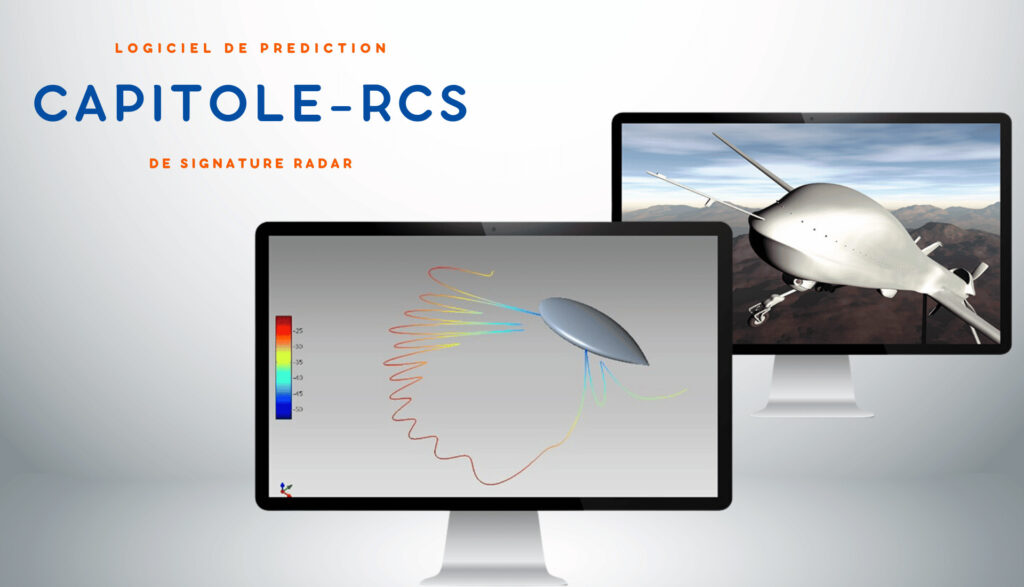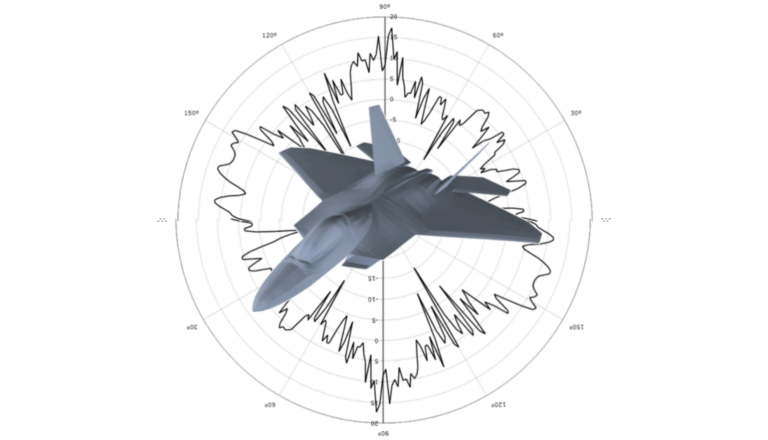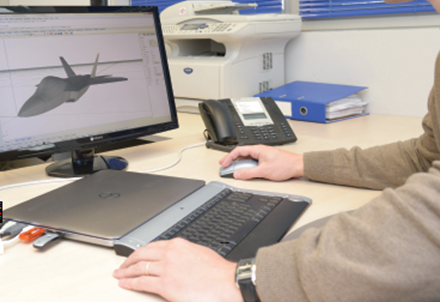Radar signature prediction software
Calculate the Radar Cross Section of your equipment with CAPITOLE-RCS

Main functions
- Far-field RCS calculation Monostatic or Bistatique, Directivity
- Near-field RCScalculation
- Solving models with millions of unknowns
- Import CAD files
- 3D modeling
- Mesh generation
- Defining material properties
- 2D polar and cartesian curve display
- 3D diagram display
4 reasons to choose CAPITOLE-RCS
- It can be used to estimate the radar signature of a system during the preliminary design phases, in order to guide design choices.
- It interfaces with the most common CAD formats, facilitating exchanges with mechanical and structural design departments for the development of high-performance systems.
- It has been extensively validated with measurement results on reference cases, and by comparison with in-house software from major defense manufacturers.
- The simple, intuitive interface allows engineers to reduce the time spent on model and mesh creation, and concentrate on simulation results.
Radar signature prediction software
CAPITOLE-RCS is one of the world’s only simulation software packages entirely dedicated to the calculation of RCS (Radar Cross Section) of a military system.
It is used by ministries of defense, government technical agencies, and defense manufacturers to study the design of weapons systems such as aircraft and ships.
Various solvers enable simulations to be carried out from small, complex structures with very high accuracy, right through to complete models, with maximum efficiency in terms of computing time and resources.

Who is CAPITOLE RCS for?
CAPITOLE-RCS is a tool for evaluating the radar signature of objects using numerical simulation.
It is aimed primarily at engineers in design offices who need to know the signature of objects, either to control it as an object designer, or to be able to evaluate the performance of a radar system designed to detect these objects.
For what needs?
The main benefits of simulation are :
- Help design, using digital twins, before prototyping and testing
- Test a large number of configurations through simulation, by carrying out parametric studies, and thus search for an optimal solution.
- Reduce prototyping and test phases
- Reduce development time and costs.
CAPITOLE-RCS user benefits
Fast
use of matrix compression solvers to reduce calculation time
Powerful
capable of calculating very large models with millions of unknowns
Simple
thanks to a streamlined graphical interface totally dedicated to RCS calculation
CAPITOLE-RCS use cases
- Read full article
